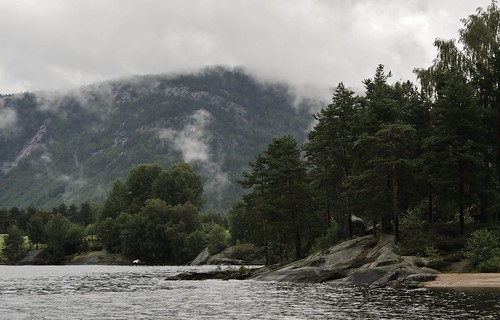
I am a geek so it was inevitable that I would join something like Library Thing, and this I did, some years ago, not to catalogue my entire book collection, but simply to keep track of what I was reading, had read and wanted to read, and to see what people with similar reading tastes were recommending. I spent a good few days adding all my books, and continued to add to my catalogue after finishing each book I was reading. As time went on I grew tired of the commitment required to keep an up-to-date catalogue, and gradually my use of Library Thing dwindled. Later on, I discovered
Goodreads which allowed you to sync your account with Facebook and post book reviews there as well. By now I had cancelled the email account associated with Library Thing and could no longer access it, so I stuck with Goodreads and built up my catalogue again. When I saw that we could create a Library Account for 23 Things, I decided to re-open the account and found I could import my library from Goodreads, therefore making the exercise much easier. Some of my book covers weren't recognised but this was easily fixed. So I didn't add all these books manually (well not this time although I did once upon a time!). I still prefer the Goodreads interface though, and their Blogger widgets also look more appealing than the Library Thing one in my sidebar. Both catalogues do much the same thing - i.e offer a place to list your books, connect with other readers, recommend titles and post reviews, but I still prefer Goodreads. It just looks less dated than Libray Thing (see below) and it is also completely free (Library Thing is free for 200 books and then you have to open a paid account).

I'm not entirely sure why I use online book catalogues - I guess I just like to keep a record of what I've been reading, much as you would keep a book journal. It doesn't bother me that it is online (although maybe I get a bit nostalgic for good old-fashioned pen and paper), but it is very quick to add books and I also like that I can see what my friends are reading, as well as what are considered the most popular books at any given time.
Onto the actual exercise.....
'Catalogue at least 25 books on your shelves, published in the last decade and with an ISBN, and see how many have fewer than 10 other LibraryThing owners.'
What did I discover??
Well I have a few more than 25 books, and many are not published in the last decade but I did nonetheless discover some interesting facts:
- The book in my catalogue that has the highest ranking in terms of popularity is Harry Potter and the Philosopher's Stone with 71.363 readers, making it no.1 on Library Thing.
- This is followed by 1984 with 45,104 readders, making it no.11.
- The book I have read with the lowest number if readers is Urien's Voyage by Andre Gide with 34 reads.
- I don't have any books in my collection with fewer than 10 other owners - and there I was thinking my collection was quite original!
This has possible been my favourite 'thing' so far, although I now look forward to Flickr and the excuse to take photographs in the name of work, and the little matter of a photography competition....










